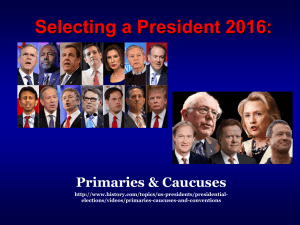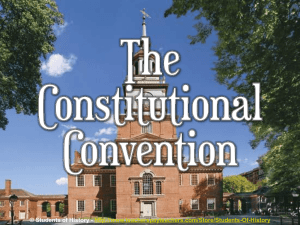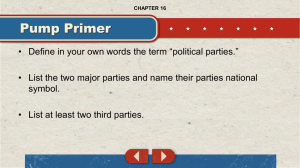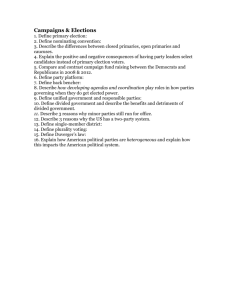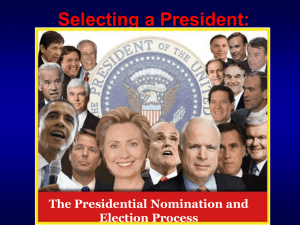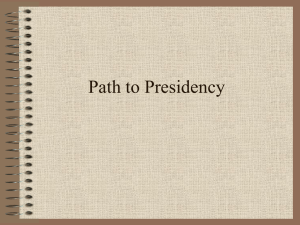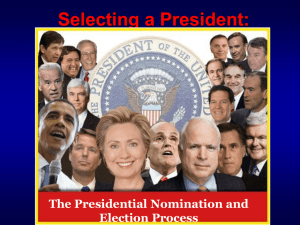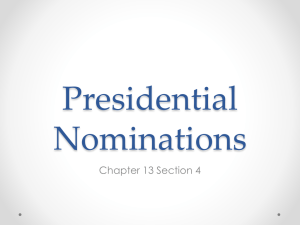Selecting a President 2016: Primaries & Caucuses
advertisement
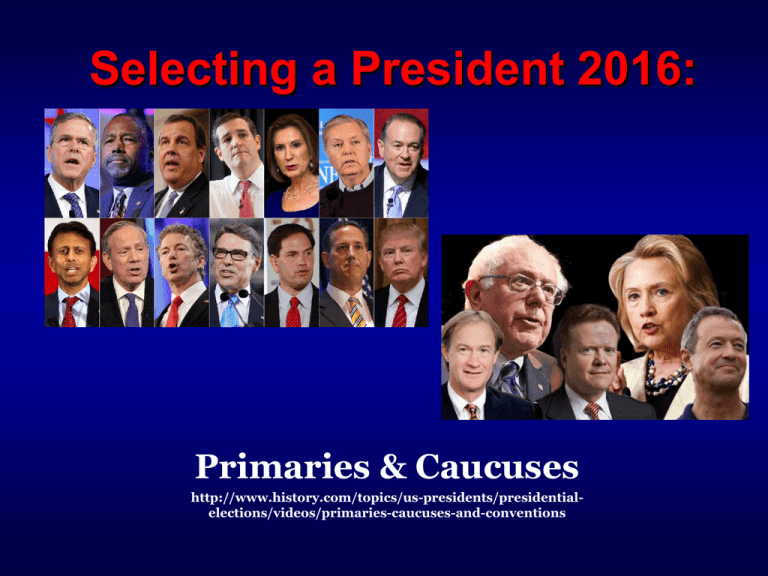
Selecting a President 2016: Primaries & Caucuses http://www.history.com/topics/us-presidents/presidentialelections/videos/primaries-caucuses-and-conventions Presidential Selection Stage 1: Caucuses & Primaries The Battle for the Party Faithful Stage 2: Nominating Conventions “Glorified Infomercials?” Stage 3: General Election The Fight for the Center Stage 4: Electoral College Power to the People? Stage 1: Caucuses Closed meeting of party members in each state Delegates select the party’s choice for presidential candidate Currently, six states offer party caucuses selecting presidential nominees. Stage 1: Primaries Presidential Primary Elections - special elections in which voters select candidates to be the party’s nominee for president in the general election. Primary Season January - June Who Decides? - State party organizations for the most part decide the rules for the primaries in a particular state. Types of Primaries: Senator Marco Rubio campaigning in New Hampshire Closed Primaries Open Primaries Closed Primary • Voters may vote in a party's primary only if they are registered members of that party Open Primary • A registered voter may vote in any party primary regardless of his or her own party affiliation. Map of 2012 Primary & Caucus Dates States with split colors have different systems for Democrats and Republicans. The color on the left represents the Democratic method, the color on the right represents the Republican method. www.centerforpolitics.org Hajo De Reijger- www.caglecartoons.com What advantage does the democratic party have in the 2012 election process? So Let’s Review • https://www.youtube.com/watch?v=_95I _1rZiIs • http://www.nytimes.com/interactive/201 6/us/elections/primary-calendar-andresults.html?_r=1 Selecting a President: Nominating Conventions Presidential Selection Stage 1: Caucuses & Primaries The Battle for the Party Faithful Stage 2: Nominating Conventions “Glorified Infomercials?” Stage 3: General Election The Fight for the Center Stage 4: Electoral College Power to the People? Presidential Nominating Conventions: The Nuts & Bolts Barack and Michelle Obama at the 2004 Democratic National Convention Nominating Conventions • An assembly held by political parties every four years • Usually held in late summer before the general election in November • The Democratic and Republican parties hold nominating conventions as do third parties [ex: Green Party, Libertarian Party] George W. and Laura Bush at the 2000 Republican Convention Purposes of Nominating Conventions 1980 Republican National Convention in Detroit, Michigan 1. Delegates at the convention adopt a party platform. 2. Delegates to the convention elect that party’s nominees for President and Vice-president. What’s a Party Platform? • Party Platform - a statement of principles and objectives a political party and a candidate supports in order to win the general election. • Plank - Individual topics in a party’s platform (ex: abortion, war in Iraq) Cartoon satirizing the 1896 Democratic Party Platform 2004 Platform Themes Democratic Party: “Strong at Home, Respected in the World” Republican Party: “A Safer World and a More Hopeful America” How are these themes similar? Different? Who are Delegates? Delegate - A voting representative to the party nominating convention Delegate Selection Proportional System Primary system used by the Democratic Party Candidates are allocated the same percentage of a state’s delegates as they received in popular votes Pro’s & con’s of the proportional system? Winner-take-all System System used in most Republican primaries The winner of the popular vote in that state receives all that state’s delegates Pro’s & con’s of the winner-take-all system? Democratic Party Rules: Two Types of Delegates Pledged Delegates v. Superdelegates Pledged Delegates Each state allotted certain number of delegates who vote at the party’s convention Pledged delegates are chosen at state & local level Pledged delegates are required to cast a vote Pledged delegates count during the 2008 Democratic primaries at the convention based on the results of the primary or caucus in their state Superdelegates Members of the Democratic Party establishment who serve as unpledged delegates at the party convention Include members of Congress, governors, and members of the D.N.C. They are free to vote for any candidate at the convention Convention Speeches: The Keynote Address Senator Barrack Obama gives the 2004 DNC Keynote Address The speech given at the convention that embodies that party’s core message Why do you think Democrats choose Barrack Obama to deliver the 2004 Keynote Addresses? Convention Speeches: The Acceptance Address 1960 presidential candidates John F. Kennedy and Richard M. Nixon deliver their Acceptance Addresses at their party’s national convention The speech given at the final day of the convention in which the winning candidate formally accepts the party’s nomination for president The Acceptance Address is always televised by the major networks
